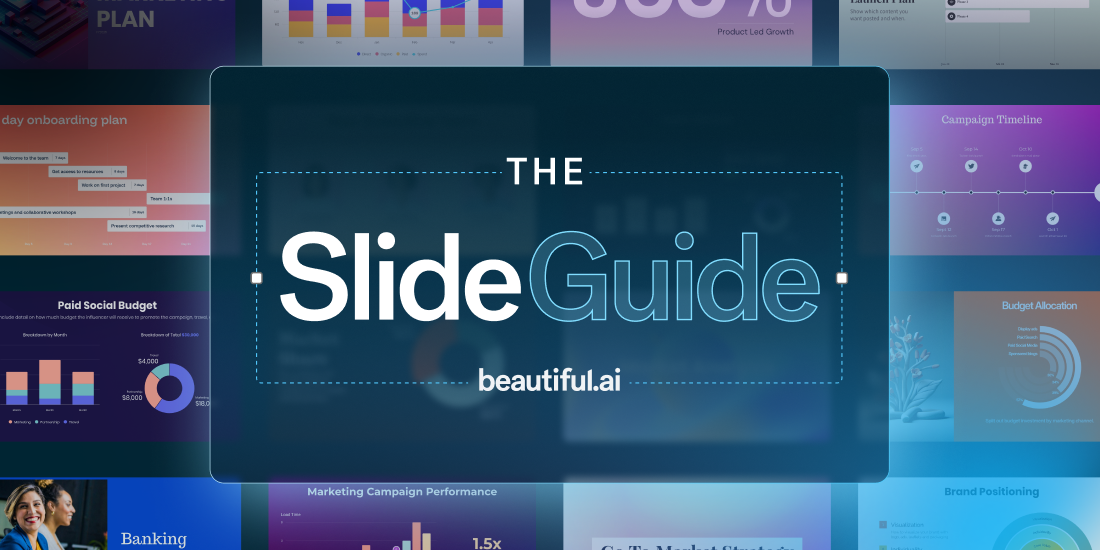
Regardless of the story, there’s one common thread in presentations: good design. Good design is important in ensuring each slide supports your story, and doesn’t distract from it. The good news? Designing better presentations doesn’t require a design degree. All you have to do is keep these six principles in mind the next time you’re creating a new deck.
1. Start with structure
Before choosing colors or fonts, focus on flow. Ask: What’s the main takeaway? Then build slides that guide your audience logically toward it. A clear structure helps your story stick—and keeps you from overloading slides with too much information.
2. Keep it simple
Clarity beats complexity every time. Limit each slide to one key idea and use whitespace to make content breathable. Avoid cramming text; instead, use short phrases, icons, or visuals to highlight points. Remember: slides are your visual support, not your script.
3. Use consistent visuals
Cohesion makes your presentation feel polished. Stick to a consistent color palette, typography, and layout. Align elements cleanly, and use hierarchy (like larger headers and smaller subtext) to guide attention naturally.
4. Let data tell a story
Numbers alone can be dull—but visuals turn them into insight. Replace tables with charts that reveal trends. Use color to emphasize the most important metrics, and pair visuals with brief, meaningful captions that explain why the data matters.
5. Design with emotion in mind
Design isn’t just about looking good—it’s about feeling right. Choose imagery and colors that match your message. For example, cool tones convey calm authority, while warm hues energize and inspire. Align visuals with your story’s tone to build emotional connection.
6. Leverage smart design tools
Modern presentation tools like Beautiful.ai automate design best practices—so you can focus on your ideas, not pixel perfection. They keep your slides aligned, consistent, and visually compelling, even if you’re not a designer. All you have to do is add your content and the slide layouts will adapt automatically to fit your story.
In short: great slides are clear, consistent, and intentional. Focus on storytelling, simplify your visuals, and let design amplify your message—not compete with it.

.png)




